Dang Gui, An Ancient Herb for Modern PMS
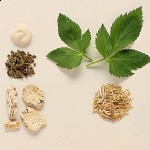 Mood swings. Depression. Irritability. Crying. Anger. Bloating. Breast tenderness. Fatigue. Insomnia. Painful menstrual cramps. Most likely you are one of the 90% of women that experiences Premenstrual Syndrome (PMS). And of that, 30-40% of you will have to rearrange your daily lives in order to maintain the proper self-care needed to manage these symptoms. Approximately every 28 days the body repeats this beautiful, life-affirming, and natural cycle.
Mood swings. Depression. Irritability. Crying. Anger. Bloating. Breast tenderness. Fatigue. Insomnia. Painful menstrual cramps. Most likely you are one of the 90% of women that experiences Premenstrual Syndrome (PMS). And of that, 30-40% of you will have to rearrange your daily lives in order to maintain the proper self-care needed to manage these symptoms. Approximately every 28 days the body repeats this beautiful, life-affirming, and natural cycle.
However, if you are one of the millions of women who experience PMS, you may find yourself wondering what is ‘natural’ about your experience. For most, these symptoms color every moment of those 5 – 7 days, including the week prior to the beginning of menstruation. This means that for 14 days out of every given month, you are feeling less than yourself. For thousands of years, practitioners of Chinese Herbal Medicine have been treating symptoms of PMS naturally. So in this modern world, where many of the solutions for relief involve harsh chemicals with potentially unpleasant side effects, returning to roots/plants is natural. Dang gui is prescribed in Asia for almost every gynecological complaint, from regulating the menstrual cycle to treating menopausal symptoms caused by hormonal changes.
Dong quai produces a balancing effect on estrogen activity. In Chinese herbal medicine it's a welcome change in restoring the unique rhythms and cycles of a woman’s body. This herb has earned a reputation among practitioners as the ‘ultimate’ herb for women. In China it is widely used, in combination with other herbs, as a daily tonic for women. It is prescribed for almost every gynecological complaint, from regulating the menstrual cycle to treating menopausal symptoms caused by hormonal changes. Dong quai seems to have an adaptogenic effect on estrogen activity. This means it adapts to what your body needs at the moment.
Found in moist meadows, alongside of riverbanks, and in mountain ravines, the root of Dang Gui (pronounced ‘dahng gway’) resembles carved ivory, while the leaves resemble those of carrots, celery, or parsley. From May to August, honey-scented, greenish-white flowers bloom in flat-topped clusters. True to the serene environment in which it grows, it helps to relax the smooth muscle of the uterus and provides a mild sedative effect. It is able to do this because it contains chemicals that mimic the effects of estrogen on the body, restraining and supplementing the production of estrogen as needed.
As Chinese Herbal Medicine gains further acceptance in the United States, the doors of research are opening as well. A study by the international nonprofit organization, the Cochrane Collaboration, found that Chinese Herbal Medicine for primary dysmenorrhea roughly doubled pain relief and improvement in overall symptoms when compared with conventional Western pharmaceuticals. In Traditional Chinese Medicine, Dang Gui is known to treat many types of gynecological problems, fatigue, anemia, and high blood pressure. It is the only non-animal source of Vitamin B12, has anti-inflammatory, analgesic, antispasmodic, and sedative properties, and is also used as an aphrodisiac. It is high in iron content and helps to prevent iron deficiency and anemia. It is truly the ultimate all purpose tonic herb for women.
This article is designed to provided the reader with clinical research results and the potential benefits and or risks associated with CAM (Complementary and Alternative Medicines). The author advocates neither for or against any particular therapy and recommends individuals speak with licensed medicial practitioners before using any Chinese herbal supplements or other health supplements.
TCM & Chinese Herbs May Be Another Alternative In Fight Against H1N1
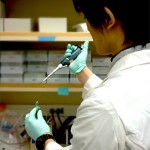 Traditional Chinese Medicine (TCM) is used by more than 3 billion people in the world. As temperatures begin to drop and winter approaches the seasonal flu and H1N1 cases begin to spread. There may be another alternative to Tamiflu & flu vaccines to battle the virus. Hong Kong based Rorric Bio-Technology Ltd. believes it may be able to offer a less invasive cure to H1N1 using Chinese Medicine. The Chairman of R&B Dr. Chow Ching-Fung says, “This formula is effective in two ways.
Traditional Chinese Medicine (TCM) is used by more than 3 billion people in the world. As temperatures begin to drop and winter approaches the seasonal flu and H1N1 cases begin to spread. There may be another alternative to Tamiflu & flu vaccines to battle the virus. Hong Kong based Rorric Bio-Technology Ltd. believes it may be able to offer a less invasive cure to H1N1 using Chinese Medicine. The Chairman of R&B Dr. Chow Ching-Fung says, “This formula is effective in two ways.
First it combats and eliminates the virus. Second, it boost the immune system, helping the patient to become stronger. Traditional Chinese medicine has a long history of being proven to have fewer side effects, as it uses herbal ingredients. But western medicine contains a mixture of chemicals from the manufacturing process. So the risks are higher.”
The formula is made of up 21 Chinese herbs. Dr. Chow says he has prescribed the formula to 100 patients suspected of contracting taking H1N1 and they have fully recovered after taking the formula. It’s currently in a powder form, but Dr. Chow says there may be a pill version in the future. Tests at the Wu Han Institute of Virology show that the formula is not only effective on H1N1 but also against other mutated forms of influenza A. Tests continue on 300 patients. If successful it will be the first Chinese Herbal prescription drug to cure H1N1.
Video Introduction to Chinese Herbal Medicine
Plant medicine is still the primary medicine for more than half the worlds population. The other half of the globe is realizing it’s time to return to our roots and re-visit herbal medicine. Plant medicine’s safety record is untouched by modern pharmaceuticals.
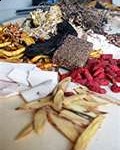 Traditional Chinese herbal medicine has a rich history of cooking raw herbs and drinking the decoction as a tea. Today with our modern processing plants we have more options to take herbs in pills form, tablets and now packets. Watch this short video if your new to Chinese herbs . It’s a good introduction to the basics of Chinese herbal formulas.
Traditional Chinese herbal medicine has a rich history of cooking raw herbs and drinking the decoction as a tea. Today with our modern processing plants we have more options to take herbs in pills form, tablets and now packets. Watch this short video if your new to Chinese herbs . It’s a good introduction to the basics of Chinese herbal formulas.
Traditional Chinese Medicine – around the world in 60 seconds
I like t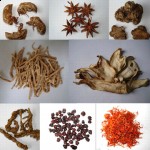 he CNN news piece called around the world in 60 seconds. It gives you a quick blurb of whats happening around the world. Here’s my take on that theme. The spread of Traditional Chinese Medicine (TCM ) around the world in 60 seconds.
he CNN news piece called around the world in 60 seconds. It gives you a quick blurb of whats happening around the world. Here’s my take on that theme. The spread of Traditional Chinese Medicine (TCM ) around the world in 60 seconds.
Hope you like numbers, in regards to TCM here’s some interesting ones. In the past 10 years, TCM has spread to over 160 countries and regions around the world with total exports of TCM products exceeding $1 billion. The treatment, education and scientific and technological communities of TCM have continuously expanded. 70 countries have signed 94 governmental agreements on TCM content. There are currently 47 TCM institutions of higher learning in China and over 600,000 qualified TCM medical practitioners over 370,000 of which are certified TCM physicians.
In America alone, 30 million people have tried acupuncture. The FDA estimates that Americans are spending approximately $500 million per year on acupuncture services. There are about 18,000 acupuncturists in the U.S. and that number increases about 10% each year. Presently there are approximately 50 accredited schools in the U.S. to study acupuncture and TCM. Britain, Israel and Australia all top the list with the highest number of acupuncturists per country outside of the US. Canada and Asian countries.
In the U.S., besides pain management, one of the most studied benefits of acupuncture is IVF procedures. Acupuncture concurrent with IVF treatments increases the chance of becoming pregnant by as much as 65% and provides as much as 91% increased chance in a live birth. Those are some impressive statistics. This is of course only one example of how acupuncture and TCM can improve people’s lives.
A fun fact: cruise ships now regularly have acupuncturists aboard. Public demand is obviously driving that business. On a more academic note, The National Institute for Health (NIH) operates the Center for Complementary and Alternative Medicine with a 121 million dollar budget, much of which support acupuncture research studies. Currently our congressmen are discussing a bill which for the first time would include Acupuncture into medicare reimbursement. That’s impressive by itself. The American government is actually considering a form of health care which relies on prevention and wellness.
Things are changing rapidly in the TCM world, stay tuned, we are growing exponentially everyday and that’s my 60 second update.
Eating the Afterbirth – Placenta Is A Chinese Medicine Tradition
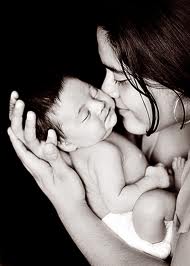 This blog, about the human placenta may sound “out there”, but more and more women are now calling “a placenta cooking lady” to prepare their placenta into pills to take after child birth. The placenta is attached to the fetus via the umbilical cord. Once the baby is born the placenta and cord are considered medical waste (so we are told) at the hospital. We’ve known for some time the umbilical cord is a source of stem cell research and many wealthy parents now have the cord frozen and stored just in case it is needed in the future.
This blog, about the human placenta may sound “out there”, but more and more women are now calling “a placenta cooking lady” to prepare their placenta into pills to take after child birth. The placenta is attached to the fetus via the umbilical cord. Once the baby is born the placenta and cord are considered medical waste (so we are told) at the hospital. We’ve known for some time the umbilical cord is a source of stem cell research and many wealthy parents now have the cord frozen and stored just in case it is needed in the future.
Recently, this trend is gaining popularity in the West. However, its been widely known and accepted that the human placenta has tremendous value in the East. Chinese Medicine has used human placenta as part of their materica medica for generations. Ingesting your placenta can help a new mother recuperate from childbirth and rebuild lost blood and nutrients.
You can have your placenta cooked, dried and placed into pills to supplement your child birth recovery. Those that have used placenta pills after birth swear they have a shorter recovery from postpartum hemorrhaging, more energy from replenished nutrients, increased milk production and no post-partum depression. In fact, a good friend of mine recently gave birth and she has just finished taking her placenta pills. This was the first time she had placenta prepared into pills and she reported feeling great and said it was a little like a caffeine type energy boost without the caffeine. She had an extremely easy recovery overall and this was her sixth child.
According to Traditional Chinese Medicine, placenta is considered a powerful and sacred yang tonic. Traditionally, the placenta is cooked with herbs and wine. Wine in Chinese medicine has a dispersing action and therefore helps to distribute the placentas nutrients throughout the women’s body. The placenta is full of natural oxytocins which are responsible for contracting the uterus, it also contains hormones which are believed to be the reason it helps with postpartum depression. Historically Chinese Medicine has used human placenta for those who have low energy. Interestingly, it is the only meat that comes from life, not death, and we are the only mammals that do eat their placentas. Maybe the animal kingdom has something to teach us.
4th of July Fireworks and Chinese Medicine
[wpsc_products category_id=’4′ number_per_page=’6′]
Another July 4th and Americans, including myself, love their fireworks shows. Most people know the Chinese invented fireworks but do they know when? The invention of gunpowder was approximately 800 AD. Gunpowder was used to make signal flares in 1232, later becoming fireworks.
What else was going on in China, in the year 1232? Well, Chinese Medicine was enjoying more popularity than ever with more written text and heavy hitters emerging. In fact, Chinese medicine was enjoying a kind of renaissance. The Tang Dynasty (618–907) already had a claim to an important text on Pulses. The Huang Di nei Jing, arguably one of the most important documents in Traditional Chinese Medicine, had already been around approximately 1000 years, (completed by 220 AD).
This year we celebrate our nations 233rd birthday. Sound pretty young compared to Chinese medical history and the birth of fireworks.
Just as we embrace Chinese pyrotechnics to celebrate our independence we should also embrace another Chinese creation, Traditional Chinese Medicine. Right now were at the birth of showing our independence from Western medicine. With the advent of greater acceptance of Traditional Chinese Medicine we are taking control of our health and well being. Just as we embrace fireworks this 4th lets also embrace the other Chinese innovations.
Fun Fact: (Fire rockets were made by filling capped bamboo tubes with gunpowder and iron bits (shrapnel). These lethal weapons were attached to an arrow, lit, and shot from a bow. These were the first solid-fuel rockets. The Chinese used them to fight the invading Mongol hordes.)


